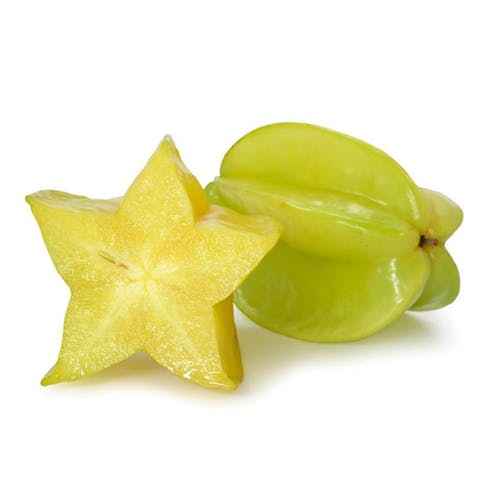

Carambola, or star fruit, is the fruit of Averrhoa carambola, a species of tree native to Indonesia, the Philippines, and throughout Malesia. The fruit is commonly consumed throughout Southeast Asia, the South Pacific, Micronesia, and parts of East Asia. The tree is cultivated throughout non-indigenous tropical areas.
The fruit has distinctive ridges running down its sides (usually five but can sometimes vary); when cut in cross-section, it resembles a star, hence its name.[1] The entire fruit is edible and is usually eaten out of hand. They may also be used in cooking and can be made into relishes, preserves, and juice drinks.
The fruit is about 5 to 15 centimetres (2 to 6 inches) in length and is an oval shape. It usually has five prominent longitudinal ridges, but in rare instances it can have as few as four or as many as eight. In cross section, it resembles a star. The skin is thin, smooth, and waxy and turns a light to dark yellow when ripe. The flesh is translucent and light yellow to yellow in color. Each fruit can have 10 to 12 flat light brown seeds about 6 to 13 mm (0.25 to 0.5 in) in width and enclosed in gelatinous aril. Once removed from the fruit, they lose viability within a few days.
Like the closely related bilimbi, there are two main types of carambola: the small sour (or tart) type and the larger sweet type. The sour varieties have a higher oxalic acid content than the sweet type. A number of cultivars have been developed in recent years. The most common cultivars grown commercially include the sweet types "Arkin" (Florida), "Dah Pon" (Taiwan), "Ma fueng" (Thailand), "Maha" (Malaysia), and "Demak" (Indonesia) and the sour types "Golden Star", "Newcomb", "Star King", and "Thayer" (all from Florida). Some of the sour varieties like "Golden Star" can become sweet if allowed to ripen.